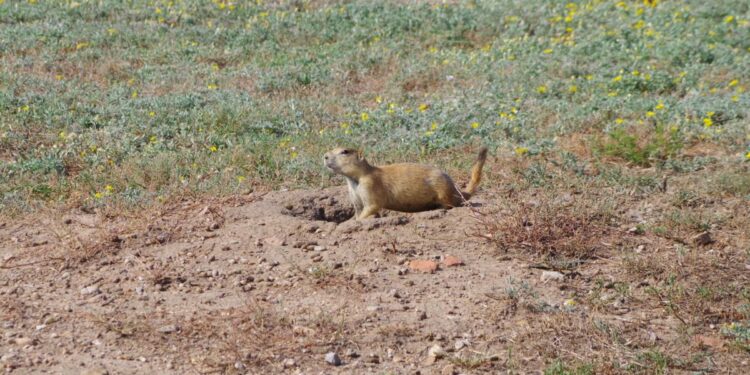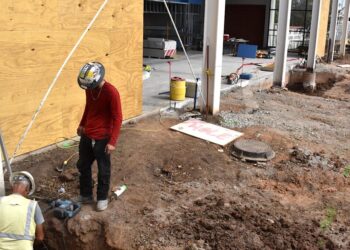Biologists already are studying a group of Lawton prairie dogs and learning their habits and family links, in preparation for a relocation project.
The city prairie dogs will be moved to the Wichita Mountains Wildlife Refuge in a two-phased project slated to take place in mid-September and mid-October, said Dan McDonald, wildlife biologist at the refuge. The effort is taking place under a recently-approved partnership between the wildlife refuge and the City of Lawton: the city is providing the prairie dogs from its overpopulated Elmer Thomas Park and surrounding area; the wildlife refuge, the planning, materials and muscle power to move the furry critters.
Those city prairie dogs will be transferred to the old Turkey Creek prairie dog colony, a once-thriving town along Oklahoma 49 on the refuge’s west side, McDonald said, of a project wildlife biologists are tackling after extensive talks with researchers at Oklahoma State University. Biologists hope the Lawton prairie dogs will make themselves at home in the Wichita Mountains, reviving a colony popular with visitors while serving as the first of several towns the refuge will re-establish.
McDonald said the partnership has great potential because it provides a way for Lawton to control its out-of-control prairie dog population while helping the refuge restore a wildlife source.
He said said the effort has been under way for a time. The refuge already selected its reintroduction site and is preparing it, mowing three to four acres, then ensuring some burrows were excavated in preparation for new owners.
Once the prairie dogs are placed at the refuge, temporary fencing around the colony will ensure they stay at their new home and don’t try to wander off to be struck by vehicles or killed by predators. The fencing will be removed in a few days, McDonald said, adding that biologists will keep an eye on the new colony to ensure members are burrowing and otherwise adapting to their new home.
Details already are being coordinated for capturing the Lawton prairie dogs, which will be done in two takings.
McDonald said that several days before the actual event, biologists will place traps at the selected site (near Ramada Park, on the east side of Northwest 2nd Street). The idea is to get the prairie dogs used to the traps, so they ignore them, he said. At the same time, biologists will begin laying out feed to entice the prairie dogs and get them used to eating what the humans have left. The night before the trapping event, biologists will go back to the colony and set the traps, baiting them with the feed. The idea is that the prairie dogs will go into the traps the next morning to eat the feed they have been enjoying, setting off the traps.
Those who are trapped will have their health tested (blood samples will be drawn) and given microchips and ear tags so they can be identified. The idea is that once the prairie dogs are released in the refuge, biologists can keep track of them.
“We hope for the best,” McDonald said, adding biologists will do everything they can to mitigate any issues that may cause problems or undue stress for the prairie dogs.
While biologists intend to take a minimum of 30 prairie dogs, the agreement with the City of Lawton allows them to take up to 100. Those prairie dogs will be a mixture of male and female, and while there may be some juveniles, there will be no pups that time of year. What there will be is family members.
“We try to keep family groups together,” McDonald said, explaining that mixing families can cause aggression problems, which is why trappers tend to take entire families.
Biologists already know the families of the prairie dogs they have been watching in the Ramada Park area. There is another advantage of taking that population: its members have less interaction with humans, meaning they act like prairie dogs in the wild.
“They behave like normal prairie dogs would,” McDonald said, adding that observation has told biologists that these prairie dogs are avoiding humans when they can, as normal prairie dogs would do.
And that makes it more it more likely they will survive in the wilds of the refuge. McDonald said while the refuge has predators in the form of coyotes and bobcats, town prairie dogs already know how to handle dogs and cats, and that coping mechanism is the same one they will use in the refuge.
Want to reach a local audience and grow your business?
Our website is the perfect platform to connect with engaged readers in your local area.
Whether you're looking for banner ads, sponsored content, or custom promotions, we can tailor a package to meet your needs.
Contact us today to learn more about advertising opportunities!
CONTACT US NOW




